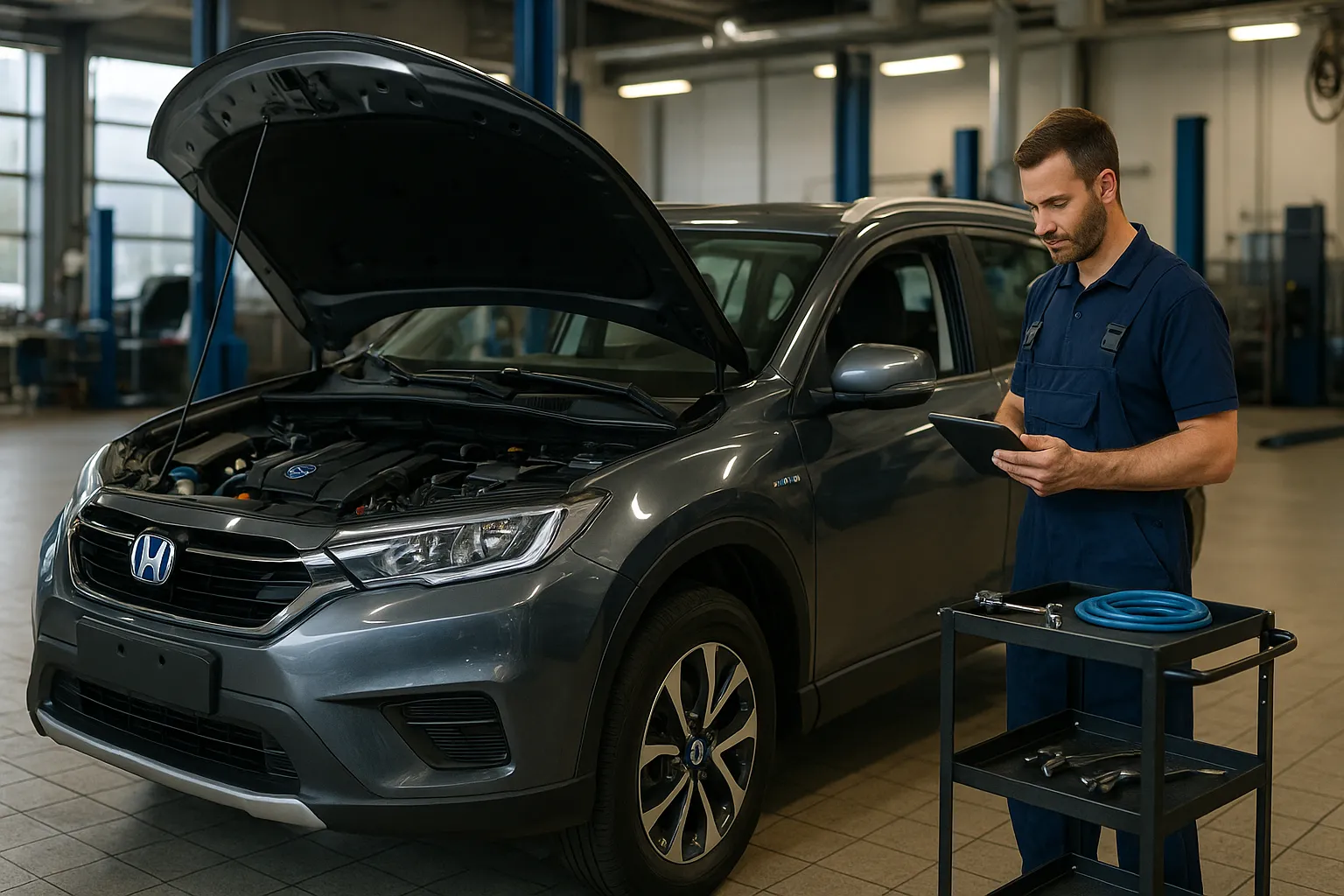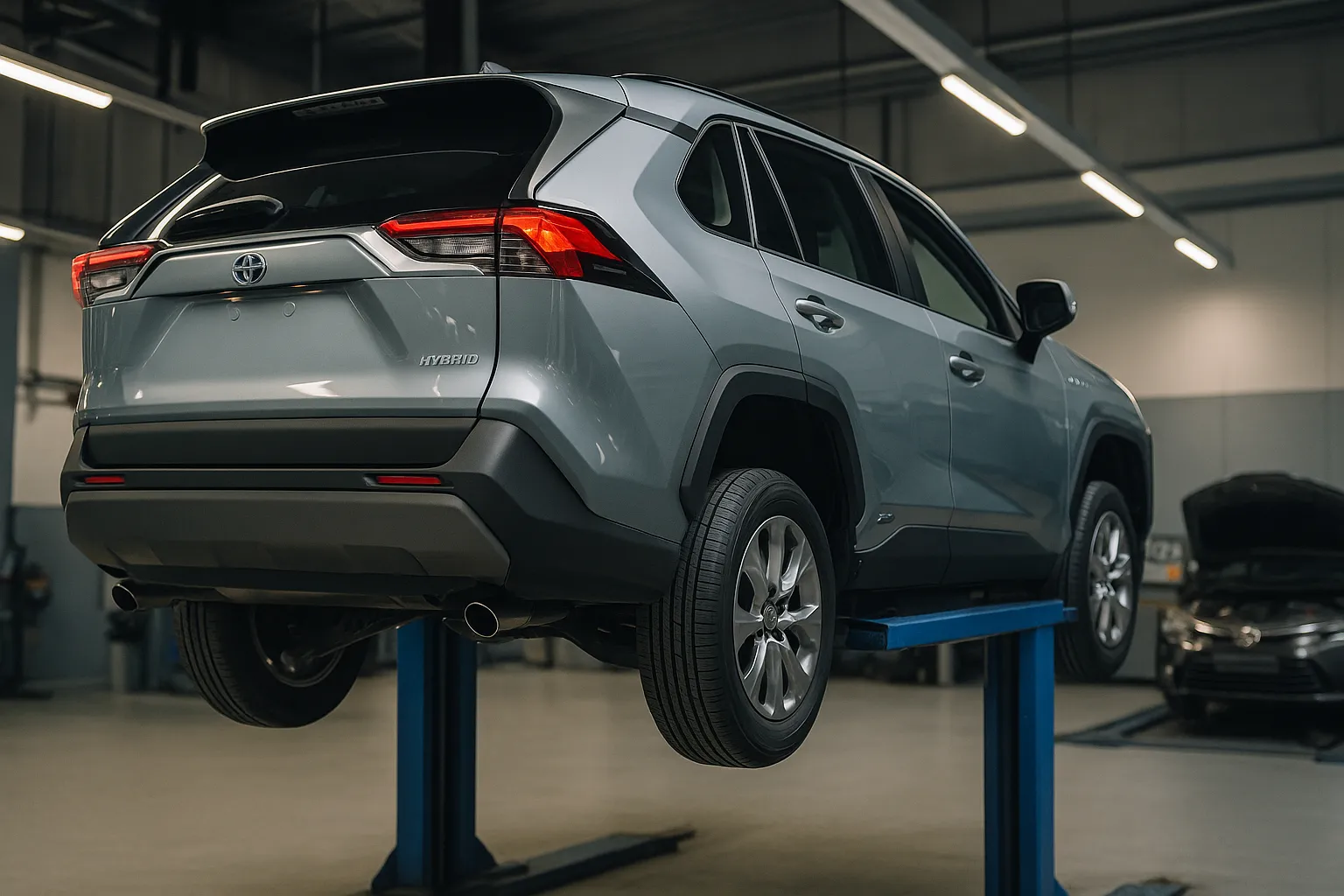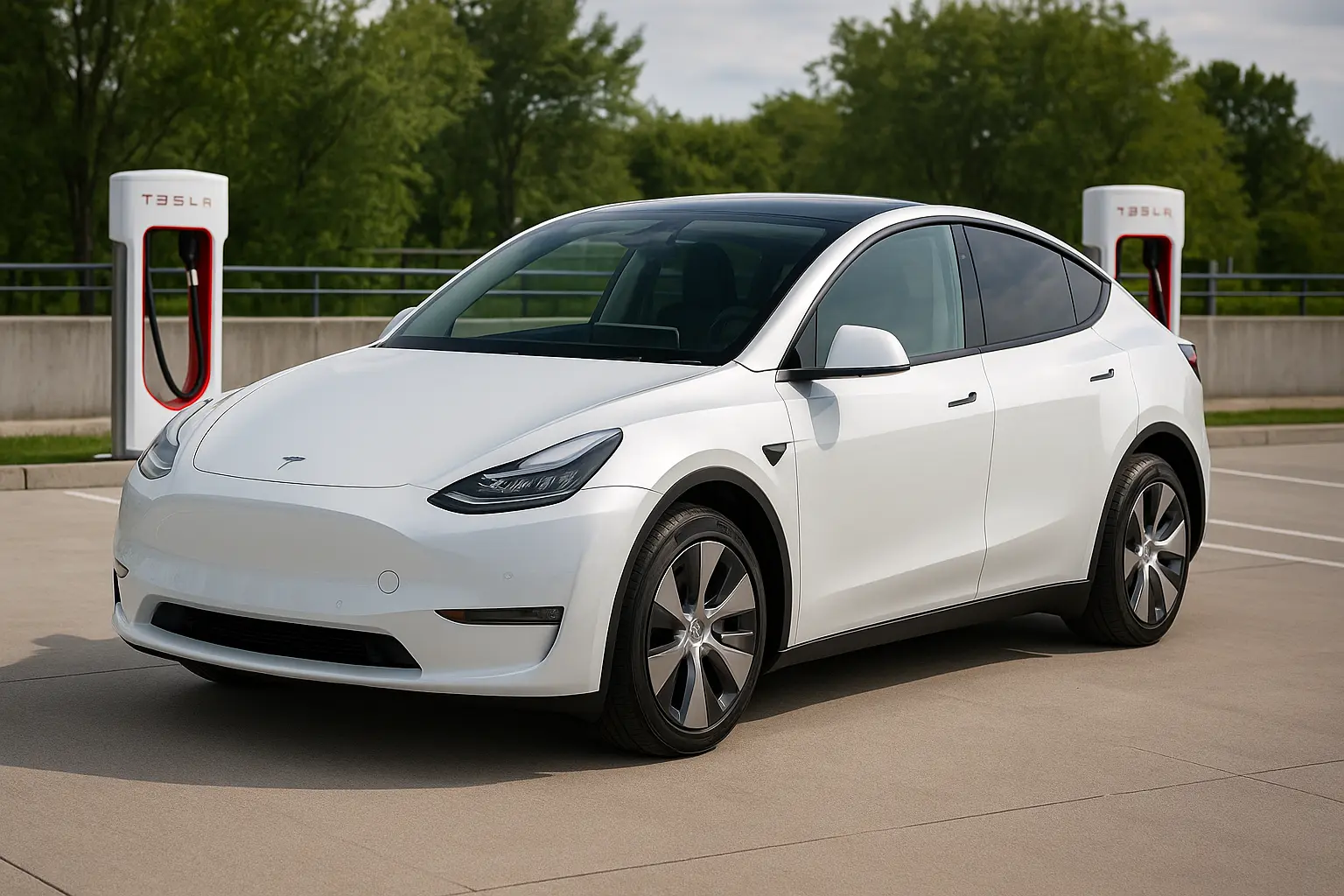Australia’s hybrid car boom shows no signs of slowing down in 2025. With the perfect blend of petrol reliability and electric efficiency, hybrids are now a mainstream option for Aussie families, commuters, and eco-conscious drivers. But owning a hybrid vehicle isn't just about saving fuel — it also requires understanding a unique set of maintenance requirements.
This guide walks you through everything Aussie hybrid owners need to know in 2025 — including maintenance schedules, servicing costs, common issues, battery care, and tips to extend your hybrid’s life. Whether you own a Toyota RAV4 Hybrid, Kia Niro, or Honda Civic e:HEV, this blog has you covered.

Hybrid Car Basics – What Makes Them Different?
Before we dive into maintenance, let’s quickly understand what makes hybrids distinct:
Types of Hybrid Cars:
- Mild Hybrid (MHEV) – Petrol engine with electric support, but can’t run on electric alone.
- Full Hybrid (HEV) – Uses electric-only mode at low speeds; petrol kicks in when needed (e.g., Toyota Corolla Hybrid).
- Plug-In Hybrid (PHEV) – Larger battery, can run 40–80km on electric alone (e.g., Mitsubishi Outlander PHEV).
Key Components in Hybrids:
- Internal Combustion Engine (ICE)
- Electric Motor
- Hybrid Battery Pack
- Regenerative Braking System
- Power Split Device or Transmission
These components change how hybrids are serviced — especially when compared to standard petrol or diesel cars.
Maintenance Schedule for Hybrid Cars in 2025
Hybrid maintenance is often simpler than you might think. But you’ll still need to follow a clear schedule:
| Item | Recommended Interval | Details |
|---|---|---|
| Engine Oil & Filter | Every 10,000–15,000 km | Same as petrol cars |
| Brake Pads & Rotors | Check every 15,000 km | Last longer due to regenerative braking |
| Air Filters (Cabin & Engine) | Replace every 20,000–30,000 km | Clean airflow crucial for performance |
| Transmission Fluid | Check at 60,000 km | Especially in eCVTs used in hybrids |
| Coolant (ICE & Inverter) | Replace at 80,000–160,000 km | Dual systems: engine & hybrid cooling |
| Hybrid Battery Check | Annually or every 15,000 km | Dealer diagnostics required |
| Software Updates | At each service or as needed | Often free at dealerships |
Hybrid Battery Maintenance – The Heart of the Vehicle
Do Hybrid Batteries Need Special Maintenance?
Yes — though they’re largely self-regulating, hybrid batteries require periodic checks to monitor health, temperature, and voltage irregularities.
Battery Lifespan in 2025 Models:
- Most HEVs: 8–10 years or 150,000–250,000 km.
- PHEVs: Shorter lifespan depending on charge cycles.
Signs of Battery Issues:
- Decreased fuel economy
- Warning lights on dashboard
- Reduced electric-only range
- Engine running more frequently
Can You Replace a Hybrid Battery in Australia?
Yes — though it's expensive. Costs range from $2,000 to $6,000, depending on brand and warranty.
Tip: Brands like Toyota and Kia now offer 8–10 year battery warranties, and some third-party hybrid specialists in Australia offer battery reconditioning for cheaper alternatives.
Servicing Costs – How Much Does Hybrid Maintenance Cost in Australia?
General Cost Comparison (2025 Estimates):
| Service Type | Hybrid (Typical) | Petrol Equivalent |
|---|---|---|
| Annual Logbook Service | $250–$450 | $200–$400 |
| Brake Replacement | $400–$700 | $600–$1,000 |
| Hybrid Battery Replacement | $2,500–$5,000 | N/A |
| Transmission Service | $250–$450 | $200–$400 |
| Inverter Cooling System Flush | $300–$500 | N/A |
Note: Toyota hybrids are among the cheapest to maintain due to mature tech and wide availability of parts.
Common Hybrid Maintenance Myths – Busted
Myth 1: Hybrid Cars Are More Expensive to Maintain
Not always. Hybrids often require less frequent brake changes and are easier on engines.
Myth 2: You Can’t Service a Hybrid Outside a Dealership
False. While dealerships offer diagnostic tools, many independent Aussie mechanics are now hybrid-trained.
Myth 3: Hybrid Batteries Always Fail After Warranty
Incorrect. Modern hybrid batteries last longer than expected, and reconditioned options are rising.
Myth 4: Plug-In Hybrids Require EV Charger Installation
You can charge PHEVs from a standard home socket — although charging is slower than with a wall box.
Pro Tips for Hybrid Car Maintenance in 2025
✔ Choose the Right Mechanic
Look for workshops with hybrid certification or experience with brands like Toyota, Honda, Hyundai, or Lexus.
✔ Keep Software Updated
Hybrids are tech-heavy — software updates fix bugs, improve range, and ensure hybrid components function properly.
✔ Don’t Ignore Petrol Side
Your hybrid still uses an engine — make sure it gets oil changes, spark plugs, and air filter replacements.
✔ Maintain Cooling Systems
Hybrid inverters and batteries generate heat. Always ensure coolant levels are adequate.
✔ Use the EV Mode Regularly (if available)
Helps cycle the battery and ensures electric systems remain active and healthy.
Hybrid Car Accessories That Help Maintenance
- OBD2 Diagnostic Scanner – Great for checking hybrid system codes.
- Trickle Charger for 12V Battery – Keeps auxiliary battery healthy during long storage.
- Hybrid Battery Cooling Fan Cleaner – Available for Toyota/Lexus models.
- EV Charging Timer – For PHEV owners wanting off-peak electricity savings.
Warranty, Servicing Plans & Roadside Assistance in 2025
Brand-Specific Highlights:
- Toyota: 5-year warranty + 10-year hybrid battery coverage
- Kia: 7-year warranty + capped-price servicing
- Hyundai: Lifetime service plan + 8-year battery warranty
- Honda: 5-year unlimited km + 8-year battery warranty (on e:HEV models)
Many brands also offer hybrid-specific roadside assistance that includes battery fault coverage — a huge win in rural and regional Australia.
DIY vs Professional Maintenance – What Can You Do at Home?
DIY-Friendly Tasks:
- Cabin and engine air filter changes
- Tyre pressure and rotation checks
- Hybrid battery fan cleaning (with caution)
- 12V battery maintenance
Leave to Professionals:
- Inverter coolant changes
- Hybrid software diagnostics
- High-voltage battery service or replacement
Tip: Messing with the high-voltage system can be dangerous — always seek qualified help.
Should You Buy a Used Hybrid in 2025?
Absolutely — if you follow a few precautions:
Checklist for Buying Used Hybrids:
- Request hybrid battery health report from dealership or service centre
- Confirm all logbook services were done on time
- Look for signs of HV battery wear (low fuel economy, excessive ICE use)
- Get the vehicle scanned with an OBD2 tool for system alerts
Brands like Toyota Prius, RAV4 Hybrid, and Camry Hybrid hold their value well and offer great long-term reliability.
Environmental & Fuel Efficiency Benefits of Keeping Your Hybrid Healthy
- Properly maintained hybrids continue to achieve up to 4.0–5.0L/100km fuel economy
- Battery efficiency drops if neglected, meaning your fuel bill goes up
- Lower emissions when ICE and electric systems work in harmony
Maintenance isn’t just about the car — it’s about keeping your carbon footprint low and maximizing fuel savings.
Future of Hybrid Maintenance in Australia
Trends to Watch in 2025–2030:
- Rise in mobile hybrid servicing units in metro areas
- More third-party hybrid battery refurbishing options
- Brands offering subscription-based servicing
- Integrated service apps that track hybrid system health in real time
- Increased focus on training independent mechanics for hybrid diagnostics
Conclusion: Take Charge of Your Hybrid’s Health
Owning a hybrid car in 2025 Australia is a smart move — environmentally and economically. But your savings and efficiency only last if your car is maintained properly. Stay on top of battery health, cooling systems, and regular servicing — and your hybrid will serve you reliably for years to come.
Whether you’re navigating city streets in an MG HS Plus EV or heading off-road in a Subaru Forester Hybrid, this maintenance guide empowers you to keep your vehicle in top shape.
Leave a comment
Your email address will not be published. Required fields are marked *




















